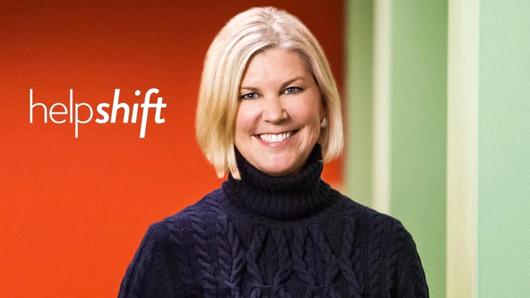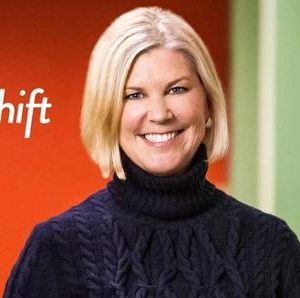
I am encouraged by the brave women who have recently stood up for women and for themselves at Uber, Google and elsewhere. Being in tech for 30 years, I have personally experienced some overt harassment and gender bias. I deeply regret that I didn’t stand up more assertively at the time it was occurring.
I recently became the CEO of Helpshift, a Silicon Valley startup revolutionizing the customer support industry through messaging-first and AI-powered consumer service. I am thrilled to be with a company that appreciates my experience and embraces my perspective as a woman in a male-dominated industry.
Earlier in the year, I decided to retire from full-time corporate life and sit on a few boards. I felt good about bringing diversity to the board room. But something was nagging at me. I kept thinking that I needed to do more to advance the representation of women in tech. It was time to be a CEO. Becoming a CEO allows me to make diversity a top priority at our company. More importantly, as a CEO, I have a “megaphone” and the opportunity to influence other executives to do their part.
“I urge my former colleagues to come back into the workforce as CEOs.”
As I was networking and interviewing for the CEO role, I quickly realized that the overwhelming majority of people sourcing and hiring CEOs are men. I tallied up the people I met along the way—recruiters, corporate executives, board members and venture capitalists. Of the 80 people with whom I met, only seven were women. How do we change the course if we don’t have more women in decision-making positions? I urge my former colleagues to come back into the workforce as CEOs. I also encourage my fellow female senior executives to step out of the number two and three positions and become a CEO.
As CEO, we can mandate an initiative for fair pay. Let’s pay fairly for those in our organizations making the largest contributions. Often women are poor negotiators on the way into a company, so from the very beginning they are behind in pay. We can stop penalizing people for being poor negotiators. When a candidate has the experience and skills to join your organization, pay them fairly from day one.
Additionally, we need more coaching and performance management training for men and women. I recently sat through a performance calibration session. I noticed a pattern of women being categorized as high performer/moderate potential. When I probed, the feedback was shockingly consistent—these women were the star performers on the team. They volunteered for the tough projects, mentored new teammates, were innovative, were the proxy for their managers, and on and on. So why weren’t they considered high potential? It was their lack of confidence, their inability to brag, and their willingness to give others too much credit. They never took the stage. We need to teach women how to say “I” more often, to take the microphone in an all-hands meeting, and to celebrate their accomplishments in public. Let’s help these high-achieving women execute a personal marketing plan.
As CEOs, we can reshape the board and demand diversity. I have an extensive network of female executives that would be incredible board members. Most of these women need sponsorship to get into the right circles and encouragement to go for it. I’ve started making it a practice to bring up two to three names of “diverse” candidates every time I speak to an executive recruiter, venture capitalist or fellow executive. Working together, we can change our industry—for the better.

Chief Executive Group exists to improve the performance of U.S. CEOs, senior executives and public-company directors, helping you grow your companies, build your communities and strengthen society. Learn more at chiefexecutivegroup.com.
0

1:00 - 5:00 pm
Over 70% of Executives Surveyed Agree: Many Strategic Planning Efforts Lack Systematic Approach Tips for Enhancing Your Strategic Planning Process
Executives expressed frustration with their current strategic planning process. Issues include:
Steve Rutan and Denise Harrison have put together an afternoon workshop that will provide the tools you need to address these concerns. They have worked with hundreds of executives to develop a systematic approach that will enable your team to make better decisions during strategic planning. Steve and Denise will walk you through exercises for prioritizing your lists and steps that will reset and reinvigorate your process. This will be a hands-on workshop that will enable you to think about your business as you use the tools that are being presented. If you are ready for a Strategic Planning tune-up, select this workshop in your registration form. The additional fee of $695 will be added to your total.

2:00 - 5:00 pm
Female leaders face the same issues all leaders do, but they often face additional challenges too. In this peer session, we will facilitate a discussion of best practices and how to overcome common barriers to help women leaders be more effective within and outside their organizations.
Limited space available.

10:30 - 5:00 pm
General’s Retreat at Hermitage Golf Course
Sponsored by UBS
General’s Retreat, built in 1986 with architect Gary Roger Baird, has been voted the “Best Golf Course in Nashville” and is a “must play” when visiting the Nashville, Tennessee area. With the beautiful setting along the Cumberland River, golfers of all capabilities will thoroughly enjoy the golf, scenery and hospitality.
The golf outing fee includes transportation to and from the hotel, greens/cart fees, use of practice facilities, and boxed lunch. The bus will leave the hotel at 10:30 am for a noon shotgun start and return to the hotel after the cocktail reception following the completion of the round.